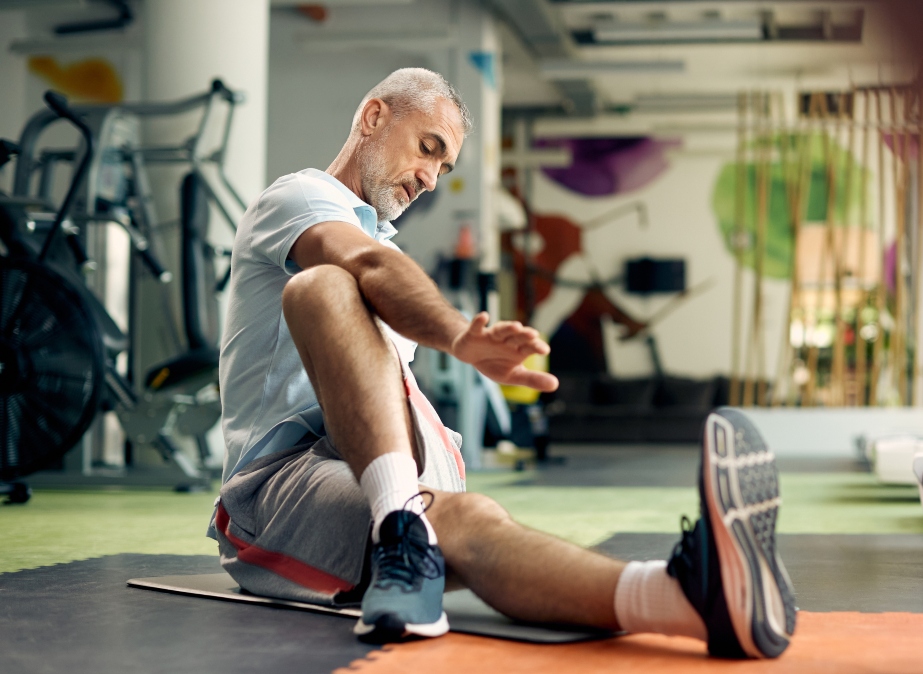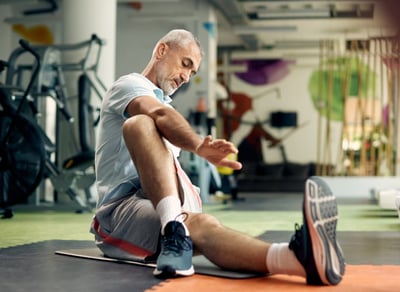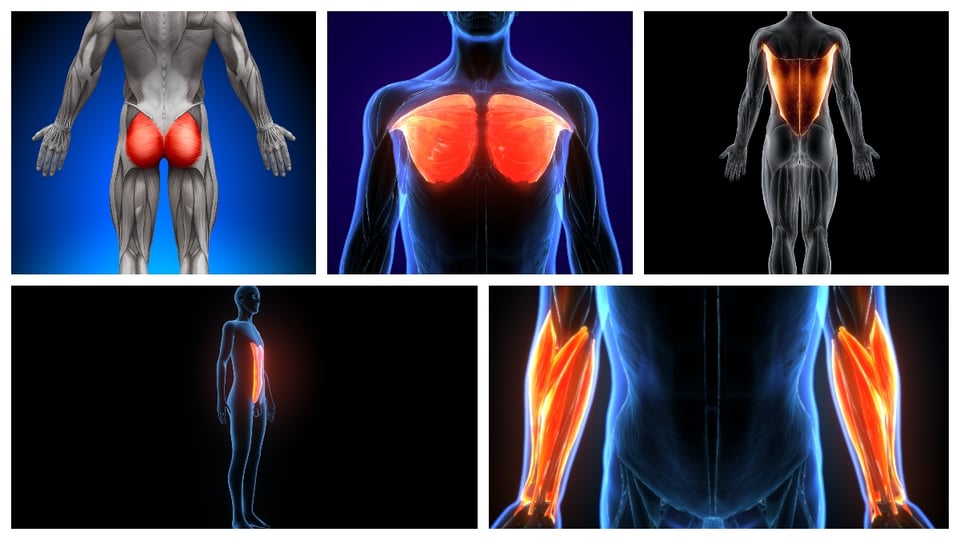6 min read
Golf Workouts: Stretches and Exercises to Sharpen Your Game
By: Greystone Golf & Country Club on Dec 21, 2021 1:00:00 PM

What’s the best way to improve your golf game? If you were to pose that question to amateur golfers, most of them would likely respond in one of two ways: first, they’d say, by committing to taking more lessons, or second, by getting golf clubs that are properly fitted to their unique swing profile.
Well, they certainly wouldn’t be wrong - skilled instruction and custom-fitted clubs are certainly important when seeking a better golf game. But they’d be overlooking one of the most beneficial ways to sharpen your game: staying as fit and flexible as possible. It’s hard to overstate just how vital proper stretching and exercise are to making an effective swing.
Think of it this way: the golf swing is a made up of a set of coordinated physical movements that require good timing and proper sequencing. Several physical elements (strength, mobility, stability, flexibility) must all come together in under one second to produce the proper swing mechanics. Unless golfers have sufficient flexibility and a reasonable amount of strength in certain key muscle groups, they’ll usually make inefficient swings that negatively impact their distance, accuracy, and consistency.
These are certainly issues for all golfers, but they become even more of an issue as you get older. Why is that?
Unfortunately, Father Time is Undefeated
One of the unfortunate but inevitable results of the aging process is a loss of both muscle mass and flexibility. And, though we don’t like it, everyone eventually accepts that Father Time is simply going to have his way. As we get older, we’re unable to do all the things that we used to do. Our swings become shorter and more restricted due to a loss of flexibility, and we don’t hit the ball as far as we used to due to a reduction in our swing speed.
Sadly, it happens to all of us. Age-related muscle loss is a natural part of aging. You may be surprised, though, to learn how early this process actually begins. After about the age of 30, you begin to lose as much as 3% to 5% of your muscle mass per decade!
The Moral of the Story
The message is clear. If you want to mitigate these issues and prepare your body for a renewed golf swing and better scores, you should make a commitment now to working out each week, dividing your time between a stretching regimen to increase your flexibility and an exercise program aimed at strengthening the specific muscles that have been determined to have the biggest effect on the golf swing. One without the other won’t get you the best results. You need to balance both strength and flexibility work to optimize your body in a golf-specific manner.
Stretching: Why It’s So Important
 If you want to have a repeatable, effective, and mechanically sound golf swing, it’s essential that you stay as flexible as you possibly can. There are many benefits that you’ll derive from a golf-specific stretching program:
If you want to have a repeatable, effective, and mechanically sound golf swing, it’s essential that you stay as flexible as you possibly can. There are many benefits that you’ll derive from a golf-specific stretching program:
- Increased range of motion - Having a normal, less restricted range of motion makes it easier to have a smoother, more balanced swing, and it reduces your chances of getting injured.
- Reduced muscle tension - Muscles that are more flexible also tend to be more relaxed. This is important in maintaining a proper swing rhythm, as well as in limiting general muscle soreness.
- Improved posture - By stretching tight muscle groups, you can reduce some of the natural muscle imbalances that each of us develop. This helps maintain your posture not only at address but throughout the entire swing.
As Greystone’s Director of Fitness Dalton Gillilan observed, “For the recreational golfer, pre-round dynamic stretching tends to make a huge difference not only in performance for the round but in preventing compounding injuries. The biggest difference is when the golfer has a relatively sedentary job for the majority of their day. Those practice movements for the body really help to prepare it for the transition from being sedentary to the activity of golf.”
There was a study done in 2015 that confirmed just how important stretching is for golfers. The output of that study was a report, entitled Effects of Special Composite Stretching on the Swing of Amateur Golf Players, that was published in the “Journal of Physical Therapy Science.” In short, the study revealed that the performance of an experimental group of golfers who participated in a 12-week golf-specific stretching program was far superior to the performance of a control group that did not take part in that same stretching program.
Results? Improvements were seen in both distance and accuracy. Among a number of their findings, it was reported that the group that took part in the stretching program had an average increase in driving distance of 13 yards, and they even showed much better accuracy with a 23% improvement in shot dispersion.
Strengthening the Important Golf Muscles
The golf swing utilizes a wide variety of muscles in both the lower and upper body. However, studies have shown that, of all the muscles employed in a golf swing, there are four specific muscle areas that have the biggest impact. So, if you don’t have time for more extensive workouts that exercise all the important golf muscles, at least spending time on these four areas will yield noticeable results for you in your swing:
- Gluteus Maximus (aka, your backside) - The glutes are the single largest and most powerful muscles in the body. It is so important in golf that it’s been dubbed “The King of the Golf Swing.” The glutes are technically considered part of the “core” and they have several vital functions in the swing.
They not only help stabilize and protect your spine during the swing, but they’re responsible for internal hip rotation (the move your hips make as you turn away from the ball on the backswing), as well as external hip rotation (the pivot of your hips as you move into the through-swing). Tightness in these muscles can lead to the golfer making detrimental compensating movements.
- Pectoralis Major and Latissimus Dorsi - The pecs and the lats are two major upper body muscle groups and, like the glutes, have several important functions in the swing. Notably, they are what allow you to have strong shoulder adductions, which enable you to move your arms across your body and to raise them in the air.
- The Core - The Core is the central component that holds everything together. It’s essential for transmitting force from the lower body to the upper body, and it enables torso rotation, a critical element of the swing. Also, having strong core muscles is one of the most effective ways to prevent injuries to the lower back that are so common in golf.
- Forearms - There are tremendous forces that come into play during the swing, and to a large extent, the forearms direct those forces into the club. Insufficient forearm strength can result in golfers being unable to control the clubhead both throughout the swing and during impact. Being able to “manage” those forces with stronger forearms will allow you to eliminate the twisting of the head and will therefore make it easier to deliver a square clubface at impact.
*Muscle groups highlighted from left to right, top to bottom
 *Note: This study was performed by Dr. Sergio Marta (and others) from the University of Lisbon. It was published in the Journal of Sports Science in July 2015. Its purpose was to identify the most important muscles used in the golf swing.
*Note: This study was performed by Dr. Sergio Marta (and others) from the University of Lisbon. It was published in the Journal of Sports Science in July 2015. Its purpose was to identify the most important muscles used in the golf swing.
Now is the Perfect Time to Start
Over the winter is the perfect time to begin a golf stretching and exercise program. It’s important to note that a program like this doesn’t need to be a burden. It doesn’t require regular trips to a fitness club. Just 30 minutes a day at home, three or four days a week will be sufficient to make substantial changes to your body that will improve your golf swing... and your scores.
To get advice on the golf-specific stretches that you can do to increase your flexibility and on some exercises to strengthen the four important golf muscles described above, you can reach out to Greystone’s Fitness Director, Dalton Gillilan. If you’re not a Member of the Club already, now’s the time to improve your game and gain all of the other benefits that come along with Membership. See for yourself by downloading the guide below.

